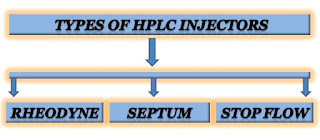The point at which the indicator changes color is the endpoint of the titration. This is always indicated by the change in color of the reaction mixture.
What is titration in chemistry?
Titration is an analytical technique that uses a known concentration solution to determine the concentration of an unknown sample solution. In the titration technique, a solution with a known concentration is called a titrant, while a solution with an unknown concentration is called an analyte. It is a method of quantitative chemical analysis also known as titrimetry and volumetric analysis.
There are different forms of titration when it comes to procedure and goals, such as acid-base titrations, redox titrations, precipitation titrations, complexometric titrations. However, acid-base and redox are the most used types of titration in quantitative chemical analysis.
| Table of Contents: What is titration in chemistry? Definition of endpoint What is the endpoint of titration? What is equivalence point and endpoint? |
This method involves dropwise adding titrant from a burette to a conical flask containing titrand until the reaction is complete; an indicator is commonly employed to detect the reaction's endpoint. In some titrations, an indicator is not required since the reactants can act as self-indicator, or the endpoint is determined through the instrumental method.
What is the definition of endpoint?
“Endpoint refers to the point in the titration process where the color of the indicator changes”.
This is the point at which no more standard solution should be applied. For example, it can be determined by a color change in an indicator or the appearance of a precipitate. In titrations, the endpoint occurs after the equivalence point. It indicates that the equivalence point has been reached.
What is the endpoint of titration?
The endpoint in the titration process is the point at which the color of the indicator changes due to pH change. This happens throughout the titration procedure when the titrant and the sample compound are mixed.
It comes with or after the equivalence point and is considered an ideal point of end the titration. The indicators will change color at this point, and we will be able to get the readings to calculate the amount of the unknown analyte concentration.
For example, acids and bases are usually colorless. Therefore an indicator (e.g. Phenolphthalein) is used to determine the completion of a neutralization reaction that can change the color (e.g. Pink) of the reaction mixture with changes in pH (e.g. Neutral).
Titration does not always involve indicators. Instrumental methods are also used to determine the endpoint, since they work at a broad range of pH, provide rapid, and precise results. Examples, pH meter, auto-titrator, conductivity meter, potentiometer, karl fischer, and isothermal titration, etc.
What is the equivalence point and endpoint of a titration?
In chemistry, the equivalence point and endpoint both are important phases that are reached during performing the titration experiment. The majority of people believe they are the same thing, however, they are not.
In the process, the equivalence point is the point where the chemical reaction in the titration mixture ends, while the endpoint is the point where the indicator changes color to indicate that the titration is complete. The equivalence point is not always indicated by a change in the color of the solution and the endpoint is always indicated by a change in the color of the solution.
Frequently asked question (FAQ):
How do you find the endpoint of a titration?
The endpoint is usually coming after the equivalence point, which is the point at which the moles of a titrant equal the moles of titrand i.e. the ideal point for titration completion.
What happens at the endpoint of a titration?
At the endpoint of a titration experiment, the analyte has completely interacted with the titrant, in which the physical change occurs that signals the reaction is complete.
What is the best indicator to signal the endpoint?
“Phenolphthalein” is the ideal indicator for detecting the endpoint in the titration of a weak and a strong base that works in the range of pH 8 to 10.
You may also like this

